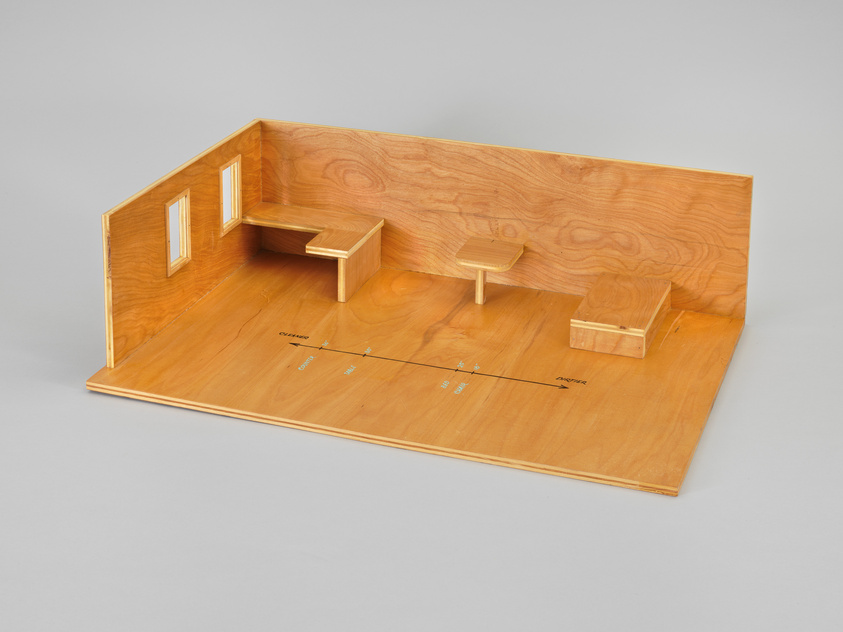Andrea Zittel, A to Z 1993 Living Unit, 1993
Oct 12, 2016
0:00
Andrea Zittel, A to Z 1993 Living Unit, 1993
0:00
Melanie Adsit: We said that today we're going to be looking at a lot of portraits. But maybe some of these portraits are going to be unexpected—an artist making portraits in unexpected ways. Would you consider this to be a portrait?
Student: I do consider this to be a portrait because a portrait does not exactly have to be a representation of a person. It could also be a representation of the environment, a representation of your daily life and what you go through every day. With this scene in front of us, we can see that it might be like a small kitchen. That can represent where someone lives.
Student: Possibly they live outside because these types of chairs and things like that are things that you would probably set drinks on if you were camping.
Melanie Adsit: I like the way we're talking about camping because when we pack our things to go camping, it's really important to make choices of everything you're going to need for the whole time that you're gone. This artist created this. She called it a mobile living unit and she lived in a very small apartment in Brooklyn. She started thinking about what was the least possible amount of things that she needed to live. How could she take everything she needed to live and put them in the smallest possible space?
Student: I think this environment really defines the artist or person's personality since we can tell, she doesn't really need that much. That tells us that she's grateful for herself.
Student: I think she might be optimistic. The reason why I think that is because she's not always wanting more. She's looking at the bright side that she does have something. I think that that's one of the traits that she might have.

